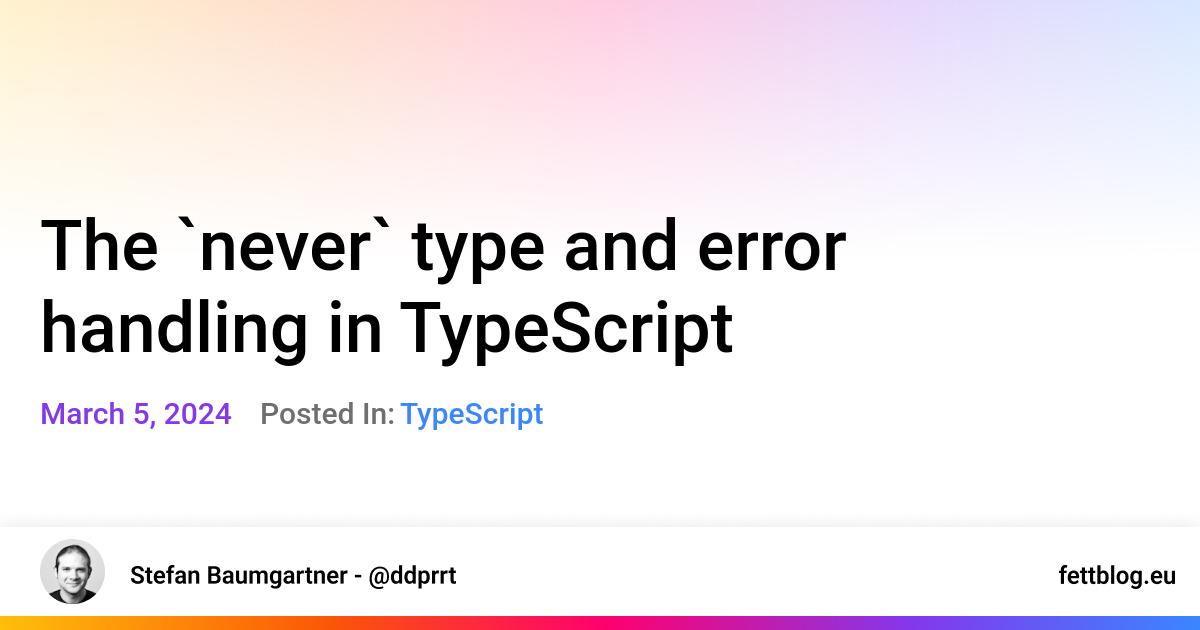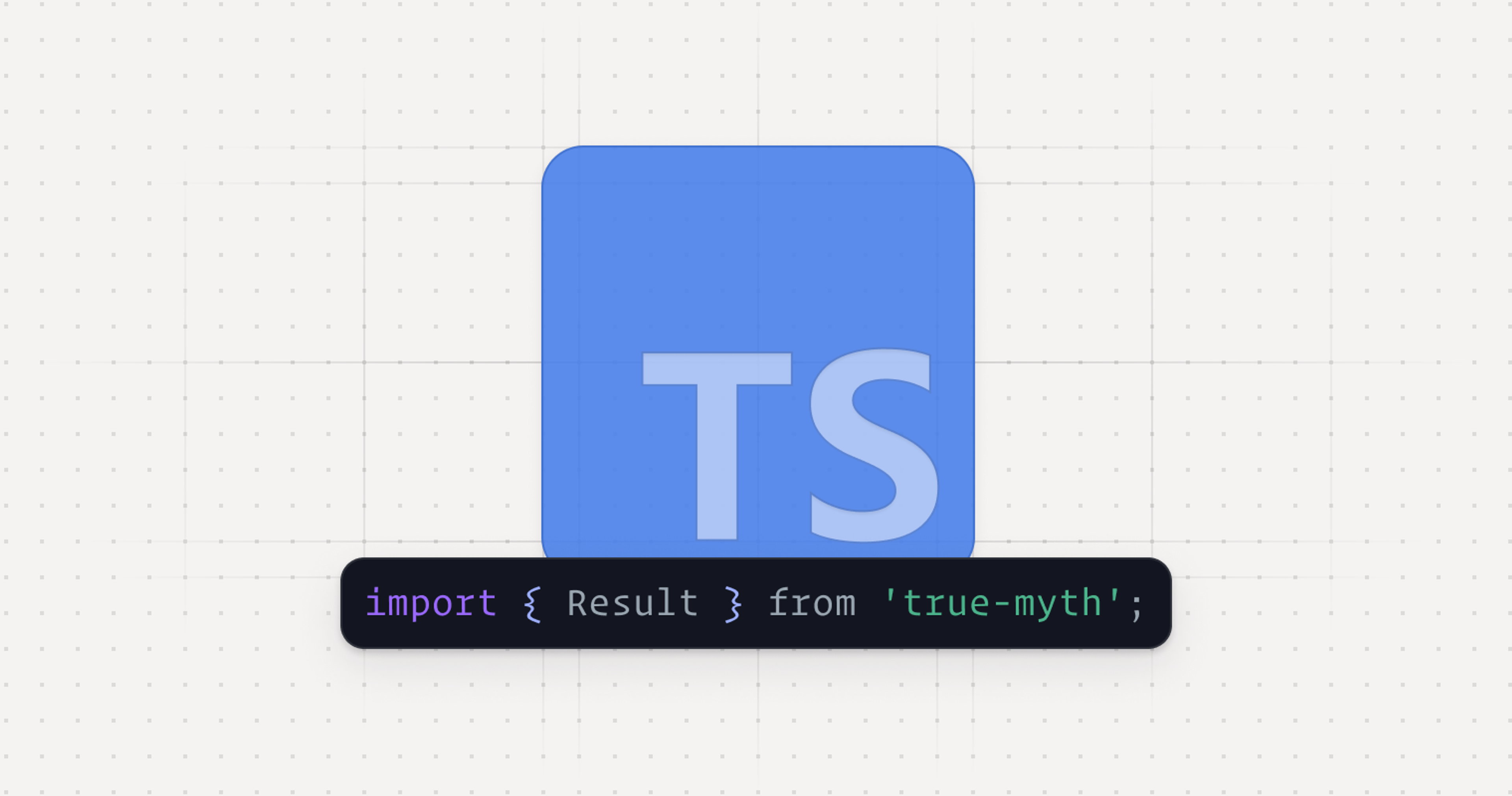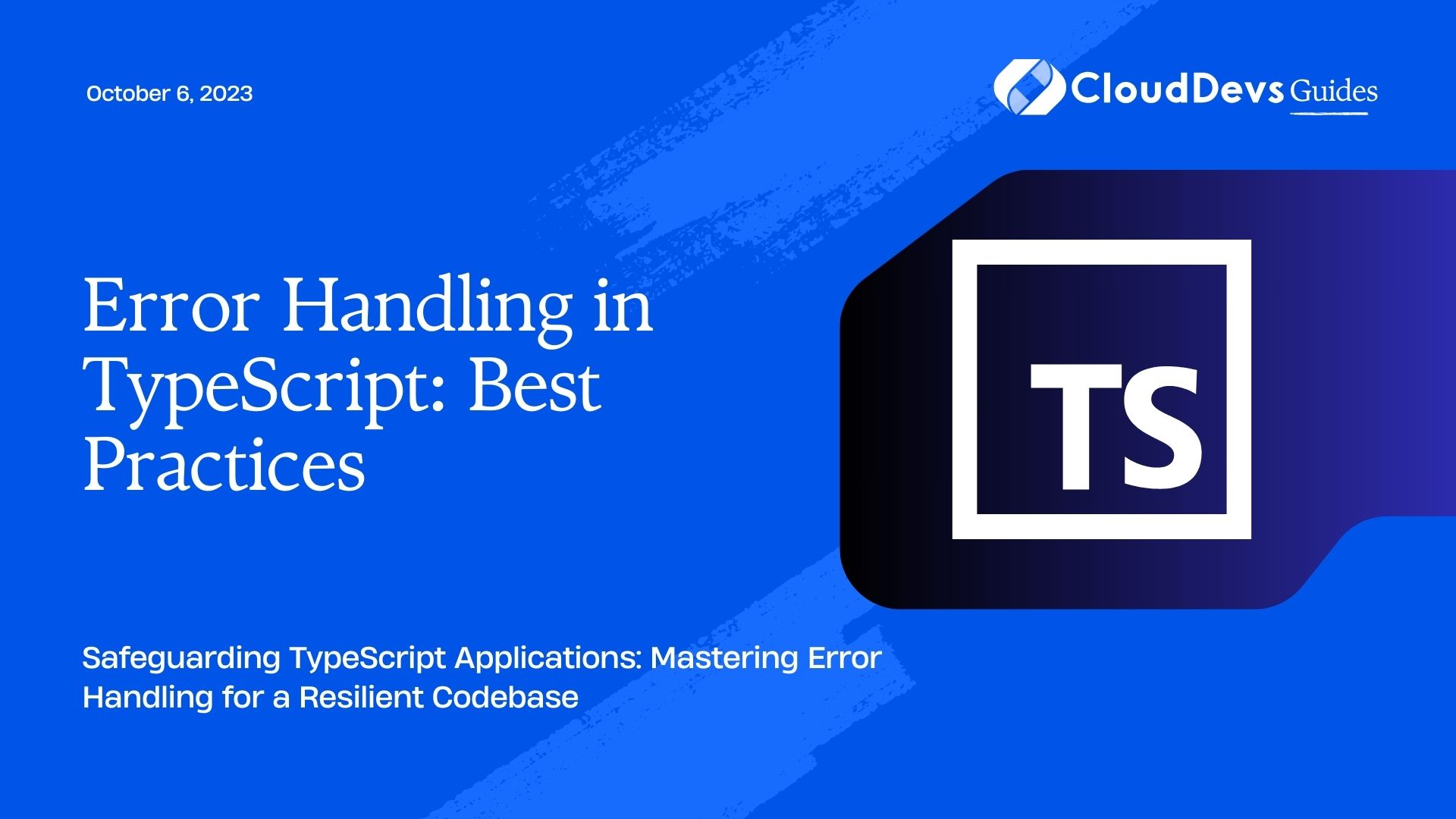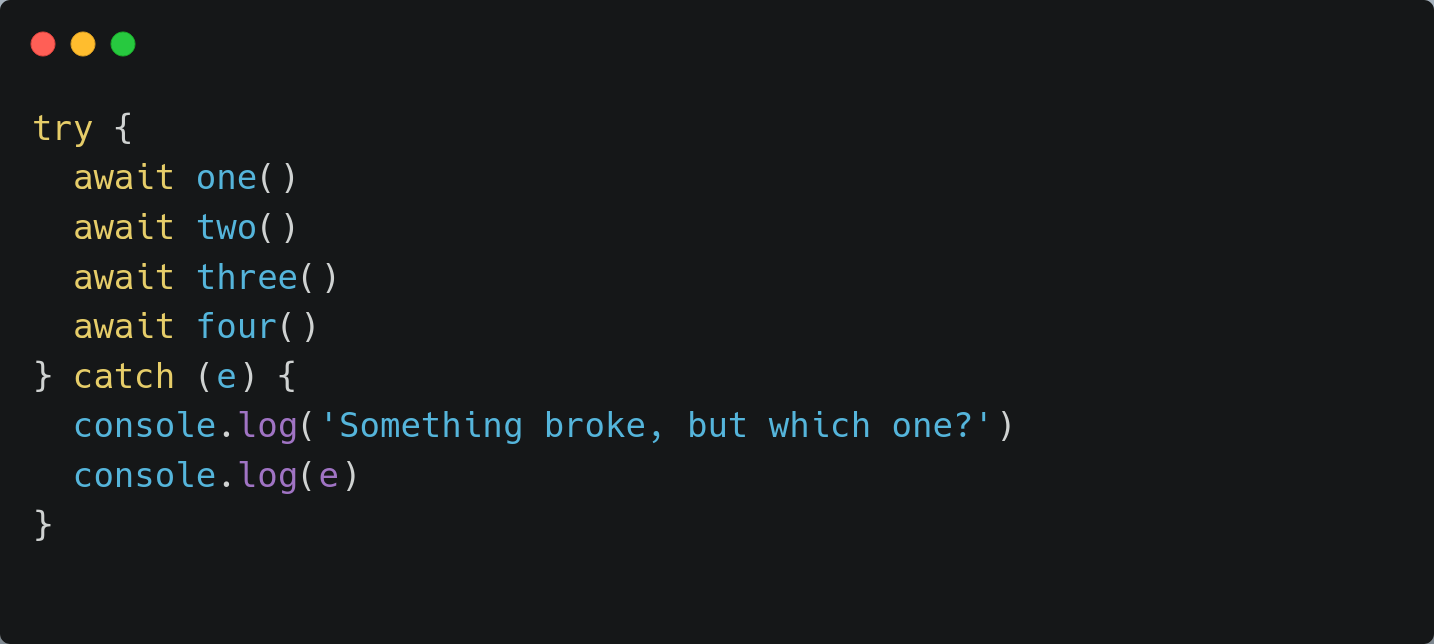Improving your TypeScript applications’ robustness and maintainability requires a robust error-handling strategy. While TypeScript’s built-in error handling is sufficient for basic needs, leveraging custom defined errors significantly enhances error management, providing more context and making debugging easier. This post delves into the intricacies of crafting and implementing custom errors for more effective TypeScript error handling.
Elevating TypeScript Error Handling with Custom Error Classes
Building custom error classes in TypeScript allows you to move beyond generic error messages. Instead of vague descriptions like “Error: Something went wrong,” you can provide highly specific information related to the type of error, its source, and potential solutions. This granular detail simplifies debugging and streamlines the process of identifying and rectifying issues in your application. Creating custom error classes involves extending the built-in Error class and adding properties specific to your application’s needs. This approach results in cleaner error logging and more informative error messages, making it easier for developers to understand and address problems.
Crafting Custom Error Types for Enhanced Clarity
Defining custom error types provides even more structure and type safety. You can create specific error types for different scenarios, such as NetworkError, ValidationError, or AuthenticationError. This approach enhances code readability and maintainability by explicitly indicating the nature of the error. The TypeScript compiler can then utilize this type information for better error detection and improved code completion. This structured approach greatly simplifies the debugging process and contributes to a more robust and reliable application.
Implementing Custom Errors in Your TypeScript Projects
Integrating custom errors into your project involves creating error classes, throwing them when appropriate, and handling them using try…catch blocks. By using custom error types, you add layers of context to your error handling, providing valuable insights to developers attempting to troubleshoot issues. This granular approach makes debugging significantly more efficient, leading to quicker resolution of problems. Consider using a consistent naming convention for your error classes to maintain code clarity and readability.
Practical Example: Implementing a Custom Validation Error
Let’s illustrate with a simple example. Imagine validating user input. A custom ValidationError class can provide specific details about the invalid input. This enhances debugging, as you don’t just get a generic error message; you receive precise information about which field failed validation and why. Using a custom error class, you can also create a hierarchy of errors, allowing for even more detailed error reporting.
class ValidationError extends Error { field: string; message: string; constructor(field: string, message: string) { super(message); this.field = field; this.message = message; this.name = 'ValidationError'; } } function validateEmail(email: string): string { if (!email.includes('@')) { throw new ValidationError('email', 'Invalid email format'); } return email; } try { validateEmail('invalidEmail'); } catch (error) { if (error instanceof ValidationError) { console.error(Validation error in field ${error.field}: ${error.message}); } else { console.error('An unexpected error occurred:', error); } }
Advanced Techniques: Error Handling Strategies and Best Practices
Effective error handling goes beyond merely catching errors. Employing strategies like centralized error logging, utilizing logging libraries such as Winston or Bun’s built-in logger, and implementing robust reporting mechanisms are crucial for maintaining a healthy application. Combining these approaches with custom error handling ensures your application is resilient, debuggable, and scalable. Remember to handle unexpected errors gracefully and provide informative feedback to the user.
Comparing Different Error Handling Approaches
| Approach | Pros | Cons |
|---|---|---|
| Generic Error | Simple to implement | Lack of context, difficult debugging |
| Custom Error Classes | Detailed error messages, improved debugging | Requires more upfront development |
| Custom Error Types | Enhanced type safety, compiler assistance | Increased complexity |
Choosing the right approach depends on the complexity of your application and your error-handling requirements. For smaller projects, custom error classes might suffice. However, for larger applications, employing custom error types along with robust logging and reporting mechanisms will be beneficial in the long run.
Conclusion
Implementing TypeScript error handling with custom defined errors is a powerful technique for improving application stability and developer experience. By incorporating custom error classes and types, you create a more robust, maintainable, and debuggable codebase. Remember to leverage advanced techniques like centralized logging and error reporting for complete error management. Start improving your TypeScript error handling today! Learn more about TypeScript’s error handling capabilities here.
#1 TypeScript Error Handling: A Closer Look into Custom Error Objects | by

#2 Handling errors like a pro in TypeScript | by Kolby Sisk | Dec, 2022

#3 The never type and error handling in TypeScript

#4 Error handling in TypeScript like a pro Plain

#5 Common TypeScript Error Messages - SitePen

#6 JavaScript/TypeScript Error Handling Made Easy with try catch Catching

#7 Error Handling in TypeScript: Best Practices

#8 Rust-like error handling in TypeScript
